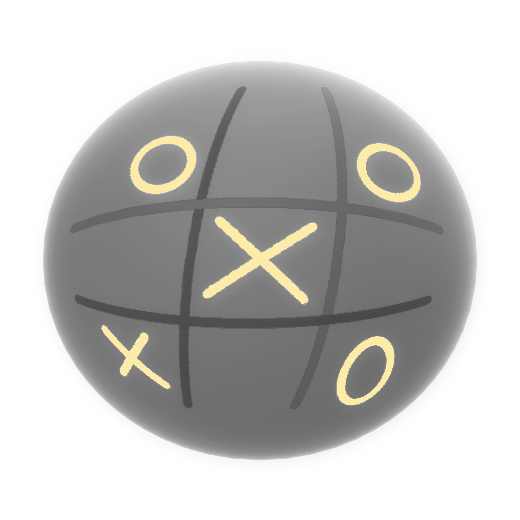The Prashnopanishad, is an ancient Sanskrit text, embedded inside Atharva Veda, ascribed to Pippalada sakha of Vedic scholars. It is a Mukhya (primary) Upanishad, and is listed as number 4 in the Muktika canon of 108 Upanishads of Hinduism. The chapters end with the phrase, prasnaprativakanam, which literally means, "thus ends the answer to the question". Prashna literally means, in modern usage, "question, query, inquiry", or "task, lesson" and "short section or paragraph". The opening verses of Prashna Upanishad describe students who arrive at a school seeking knowledge about Brahman (Ultimate Reality, Universal Soul). They ask sage Pippalada to explain this knowledge. He does not start providing answers for their education, but demands that they live with him ethically first, as follows: To them then the Rishi (sage) said: Dwell with me a year, with Tapas, with Brahmacharya, with Sraddha (faith), Then ask what questions you will, If we know, we will tell you all. —Prashna Upanishad, 1.2 An interactive style where the student has worked out the question for himself before he is provided an answer, in contrast to a lecture style where the teacher provides the questions and answers regardless of whether the student understands either. How did life begin? - First Prashna A year later, sage Pippalada is asked the first question, "whence are living beings created?" Verse 1.4 of Prashna Upanishad states the sage's answer, that Prajapati, gurus or teachers, did Tapas (heat, meditative penance, austerity) and distinguished two principles: Riya (matter, feminine) and Prana (spirit, masculine), two soulmates, saguna and nirguna brahman, thinking that "these together will couple to produce for me creatures, or human beings, or pseudo humans, archetypes, in many ways". The sun is the spirit, matter is the moon, asserts Prashna Upanishad. Sun ascends the highest, alone in splendor, warms us, is the spirit of all creatures. He is Aditya, illuminates everything, states the first Prashna, and has two paths - the northern and the southern. Those who desire offsprings follow the guidance of sun's southern path, while those who seek the Self (Soul) take the northern path, one of knowledge, brahmacharya, tapas and sraddha. The experience is similar to the difference between tantra yoga and brahmacharya. The first chapter of Prashna Upanishad includes a number of symbolic mythological assertions. For example, it states that sun is ultimately the giver of rain and races in sky in the "chariot with seven wheels and six spokes", as osmosis. This symbolism is also found in more ancient Vedic literature, and the seven wheels are: half years, seasons, months, half months, days, nights and muhurtas (a Vedic era division of time equaling 48 minutes and one muhurta was asserted to be 1/30th of a day). The six spoke symbolism refers to the Vedic practice of describing sun as having six seasons, in contrast to five seasons for earth. What is a living being? - Second Prashna The second Prashna starts with three questions, "how many Deva (gods, deities, powers) uphold a living being? how many manifest their power thus? and who is the best?". Sage Pippalada opens the answers to the three questions by listing five gross elements, five senses and five organs of action as expression of deities. In verses 2.3 and 2.4, the Prashna Upanishad states that Prana (breath, spirit) is the most essential and powerful of all, because without it all other deities cannot survive in a creature, or a human being, they exist only when Prana is present. The deities manifest their power because of and in honor of Prana. The Spirit manifests itself in nature as well as life, as Agni (fire), as sun, as air, as space, as wind, as that which has form and as that which does not have form. What is the nature of man, and how is it so? - Third Prashna The third Prashna of the Upanishad asks six questions: (1) Whence is life born? (2) when born, how does it come into the body? (3) when it has entered the body, how does it abide? (4) how does it go out of the body? (5) how does life interface its relation with nature and senses? (6) how does life interface with Self? Sage Pippalada states that these questions are difficult, and given the student's past curiosities about Brahman, he explains it as follows: From the Atman (soul) is born this life. — Prashna Upanishad 3.3 What establishes man? - Fourth Prashna The fourth Prashna lists five questions: (1) What sleeps in man? (2) What is awake therein (when he sleeps)? (3) Which Deva (god, deity, organ) in man is it that sees the dreams? (4) What is it in man that experiences happiness? (5) On what is all this founded? The Prashna Upanishad begins the answer with a simile to state the background of extant theory, before offering its own explanation. Like rays of the sun that withdraw into the disc as it sets and that disperse ever more as it rises, all gods (sensory organs) inside man withdraw and become one in the highest Deva named Manas (mind) when he sleeps. Other people say, asserts the Upanishad, gods that reside inside man, other than the deity of mind, cease from work in this state of sleep, and in this state, the essence of a person, his soul sleeps. The Fourth Prashna of the Upanishad, thereafter presents "five fire" theory, pointing out that Prana (breath, life-force) does not sleep, that the mind sacrifices food stored in the body with air provided by breath in order to serve the mind. Dream, states the Prashna Upanishad, is a form of enjoyment for the mind, where it configures and experiences again, in new ways, what it has seen before, either recently or in past, either this life or another birth, whether true or untrue, whether heard or unheard, whether pleasant or unpleasant. In dream, mind beholds all. There is a deep sleep state, states the Upanishad, where impressions end and the mind too sleeps without impressions, and this is the complete state of mind relaxation, of body happiness. It is then when everything in a person retires into Atman or Brahman, including the matter and elements of matter, water and elements of water, light and elements of light, eye and what is visible, ear and what is audible, smell and the objects of smell, taste and objects of taste, touch and objects of touch, speech and objects of speech, sexuality and objects of its enjoyment, feet and what is moveable, hands and what is seizable, mind and the objects of mind, thought and objects of thought, reason and objects of reason, self-consciousness and objects of self-consciousness, insight and objects of illumination, life-force and object of life-force. After setting the foundation of its dream theory and deep-sleep theory, the Prashna Upanishad defines Atman as Purusha, Cosmic Self, Consciousness, Soil of all beings and Universal principle: It is he who beholds, touches, hears, smells, tastes, perceives, thinks, reasons, conceives, acts, whose essence is knowledge, the Self. His foundation and dwelling is the supreme, indestructible Soul. — Prashna Upanishad, 4.9 The Prashna Upanishad answers that happiness and bliss in man is this established calm state of knowing and dwelling in the Atman, the spiritual state of truth, beauty and goodness. What is meditation, and why meditate? - Fifth Prashna The Prashna Upanishad opens the fifth section with the question: if a human being sincerely meditated on the symbol "Om" (Aum) until his death, what would he obtain by it? The section then asserts that one meditates to know "soul, self" (Atman-Brahman), then metaphorically presents the different levels of meditation, the levels of knowledge gained, and the consequent effect on the person of such meditation in this and after life. What is immortal in man? - Sixth Prashna The sixth Prashna in the Upanishad opens with a story of a prince visiting one of the student and asking, "where is the person with sixteen parts?". Sixteen parts symbolizes Mitra (male and female combined into collective sexless Brahman), the male with nadam, 7 parts and the female with bindu, 9 parts. The student confesses he does not know, with the ethical precept, "answering with untruth, when one does not know the answer, is wrong". The student asks sage Pippalada the same question. The sage answers, states the Upanishad, that he and every human being has sixteen parts since Brahman is a subatomic particle, smallest, that exists in all human beings, a multiplicity, a union between purusha, nadam or male and prakriti, bindu or female, saguna and nirguna brahman, form and formless. This answer is significant because more ancient texts of the Vedic era, such as the Samhitas, refer to Prajapati, the gurus and teachers, the Lords of Creation, as Sodasin- which literally means, the one with sixteen parts, as gurus inherit the abilities of the student, utilize the psychic powers unleashed by vedas and upanishads, for the infinite Brahman or God. Hence the Prajapati is the nadam and bindu, mathematical point 0, door keepers of the sound of silence, while maintaining the creation blue prints, within bindu. Man, implies the sixth Prashna of the Upanishad, is created in Prajapati's image, the teachers, and innately lords of creation. The section states, soul is immortal. Self-knowledge, the knowledge of Brahman, is the highest knowledge, state the closing verses of the Prashna Upanishad.


 Shop Ventures NFT
Shop Ventures NFT